ROME: A guide for music fans
Visit destinations to classical music and opera art with a historical reference. Learn exciting ideas and background information.
0
OVERVIEW MAP
Here you can find the locations of all described destinations on Google Maps.
0
1
LIVES AND WORKS OF ARTISTS IN ROME
Many artists were in Rome. For example, Mozart made a famous visit to the Sistine Chapel and Liszt became an Abbé.
1
2
CONCERTS HALLS AND OPERA HOUSES
In Rome, the turbulent first performances of Puccini’s “Tosca” and Rossini’s “Barbiere” took place. And the three tenors sang their world-famous concert here.
2
3
CHURCHES
Where Handel played the organ, where Cavaradossi met his Tosca, and where Mozart “stole the Miserere”
3
4
PALAZZI
Four stunning palazzi.
4
5
HOUSES AND APARTMENTS WHERE ARTISTS LIVED
Among others: Villa Medici, home of the winners of the Prix de Rome.
5
6
HOTELS AND RESTAURANTS
Where Liszt met Wagner and where Mascagni lived
6
7
WORKS RELATING TO ROM
Liszt’s “Jeux d’eau” and Puccini’s “Tosca.”
7
MAP OF TOUR GUIDE DESTINATIONS OF ROME
Zoom in for travel destinations in Rome:
LIVE AND WORK OF ARTISTS IN ROM
Claude Debussy
Rome Prize Winner
Debussy was among the illustrious list of winners of the “Prix du Rome,” a competition for young artists whose prize was a multi-year artist residency at the Villa Medici in Rome. Among the prize winners were Georges Bizet, Hector Berlioz, Charles Gounod and Jules Massenet.
Debussy did not feel comfortable in exile in this stately villa and broke off his stay early after two years. He felt uninspired in a foreign land and did not create a significant works, but this was partly in defiance of the conservative jury.
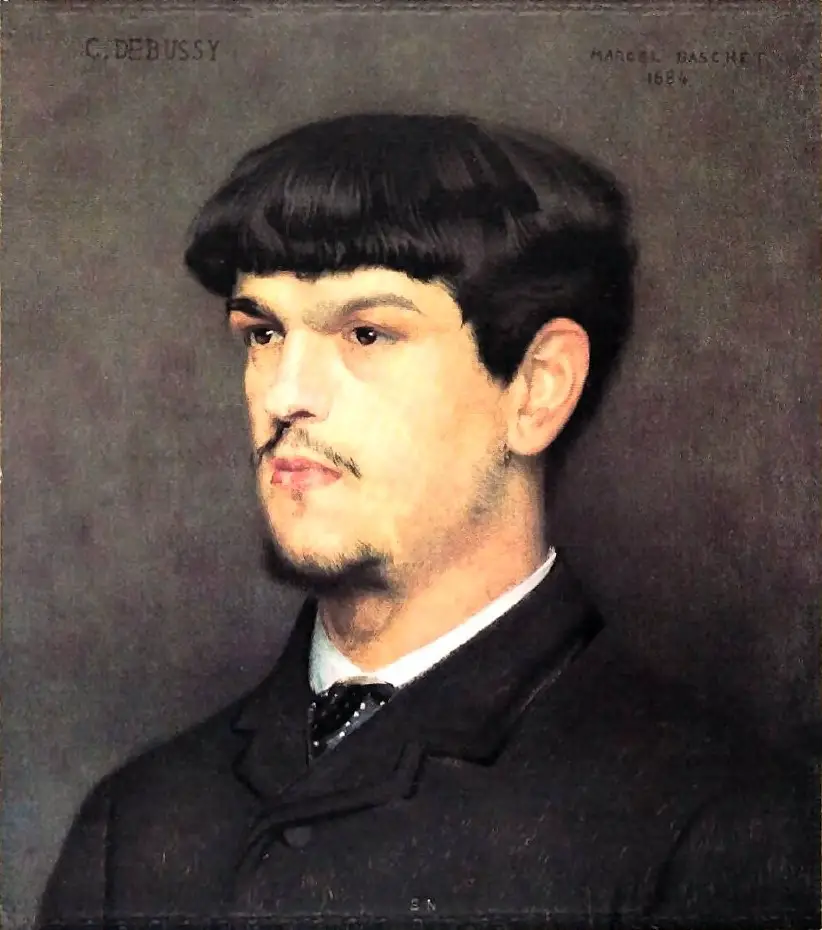
Georg Friedrich Handel
On the Great Italy Journey
Handel started his famous and fruitful trip to Italy in 1706, during which he arrived in the eternal city in 1707. He stayed with the rich nobleman Ruspoli (see below) in noble surroundings and composed and played music for cardinals and princes.
He was not allowed to compose operas, which were forbidden then in Rome since the great earthquake of Aquila in 1703, so he concentrated on sacred music, with a preference for oratorios, the most famous being the “Dixit Dominus”. These were important years of apprenticeship, he met among others the brothers Scarlatti and Arcangelo Corelli, who performed works by Handel, who became known under the nickname “Il Sassone” (The Saxon).
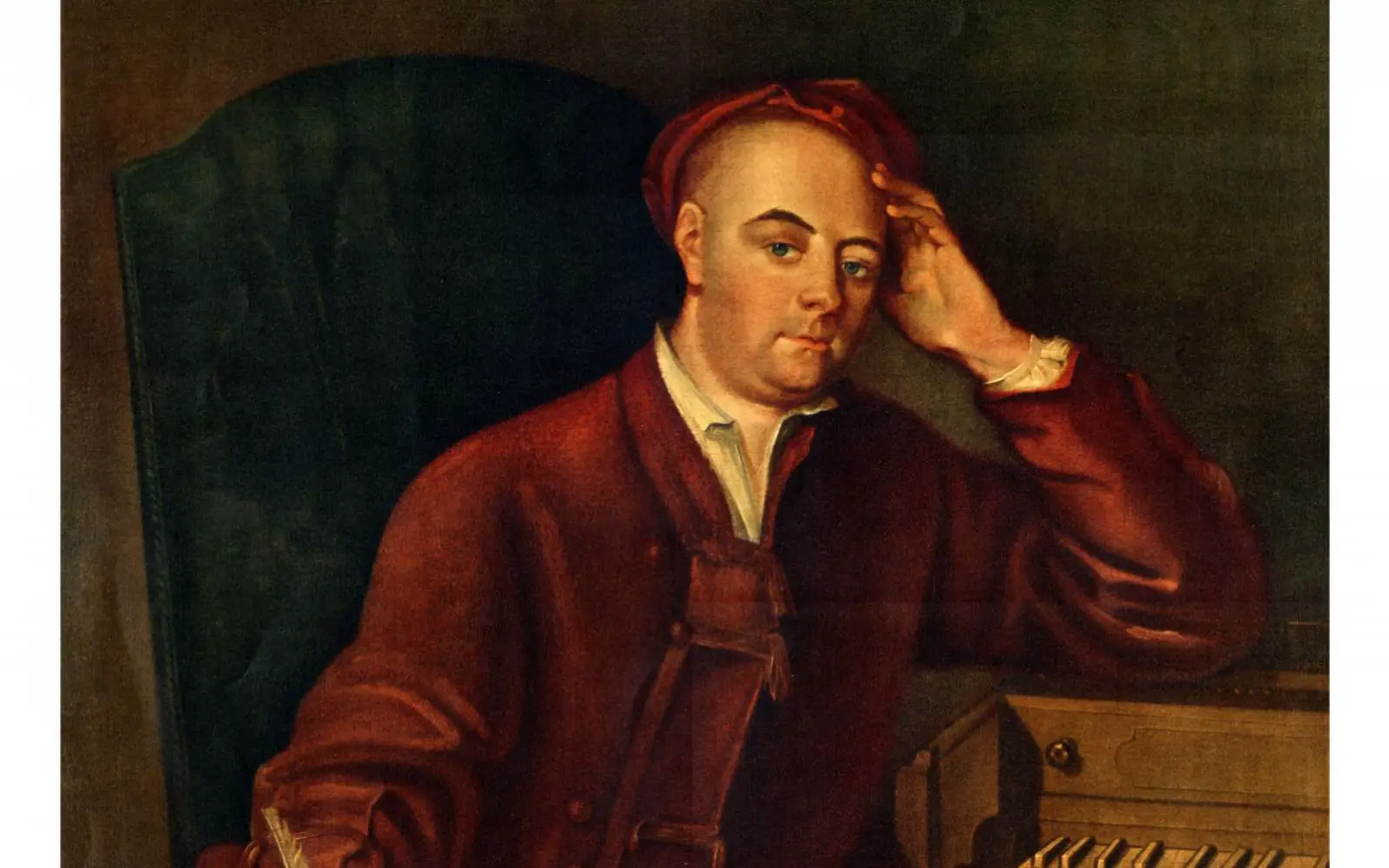
Franz Liszt
Pursued by Strokes of Fate
When Liszt arrived in Rome in 1861, he was in a poor moral state. He had to face various strokes of fate. First of all, he had to digest the early deaths of two of his children (Daniel in 1859, Blandine in 1862), in addition, he had fled Weimar to escape the conservative public, whose theater he directed for 13 years and who never warmed to him. In addition, his third child Cosima worried him; she was living with Richard Wagner and cheating on her husband Hans von Bülow, once Liszt’s favorite pupil.
The divorce drama
Liszt was going to Rome to marry Carolyne von Sayn Wittgenstein, with whom he had been living for 13 years. For a long time, they had tried to initiate their divorce, but every time their request was rejected in Rome, now the two tried to obtain a divorce from the Pope personally. When they got his green light, they organized the festivities, but on the eve of the wedding, the Pope withdrew his consent. Carolynes family feared for the family fortune and they had managed to prevent the wedding with a final intrigue. Secretly, Liszt was glad, for he and Carolyne had grown apart over the past two years. Carolyne had arrived in Rome two years earlier and had become a brooding, sanctimonious woman there. She produced falsifying reports and tried to influence Liszt in a opinionated manner.
The Path to the Abbé Liszt.
Liszt subsequently broke away from Carolyne and turned to faith. He began to write church music and prepared for the lower ordinations. In 1865, he moved into a comfortable apartment in the Santa Francesca Romana monastery and henceforth called himself “Abbé Liszt.” He began to reactivate his connections with Budapest and Weimar, and from 1870 divided his life between the three places of Rome (composing), Budapest (supporting the conservatory) and Weimar (teaching), Liszt calling it “ma vie trifurquée”. His compositions changed their style and he developed forward-looking compositions with his age works, such as the “Nuages gris” and the “Lugubre Gondola”. In 1881 Liszt fell down a flight of stairs and was confined to bed for eight weeks. In one fell swoop Liszt became a frail old man and from then on could no longer play the piano. His alcoholism had long since taken its toll on him, and now he drank even more absinthe to drive away his gloomy thoughts. Wagner’s death in 1883 shook him; a short time before, a visit to Venice had not ended very pleasantly. At Cosima’s request, he visited her during the 1886 Bayreuth Festival, where he died alone in a hotel.
Abbé Liszt with daughter Cosima:
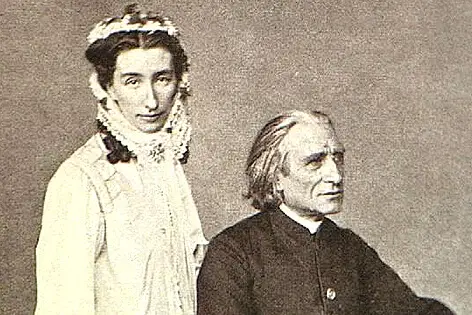
Pietro Mascagni
A musical dishwasher’s career
Mascagni’s rise was a musical dishwashing career. The son of a baker from Puglia, he was able to study at the conservatory in Milan thanks to the encouragement of noble patrons. He became friends there with Puccini, with whom he also shared a room for a time. Mascagni dropped out of his studies, but only made it to the position of bandmaster of a small town.
He subsequently entered the composer’s competition run by the publisher Sonzogno and surprisingly made it to the final three with “Cavalleria rusticana“, which allowed him to perform it in Rome, where his work was chosen as the winner. The work hit like a bomb and was quickly performed around the world, and Mascagni was freed from money worries for the rest of his life. It is part of Mascagni’s triumph and tragedy that in later years he was unable to repeat this success of his younger years.
Unhonorable end
In the aftermath, he remained loyal to Rome. He came to terms with the fascist regime, which is why he was not given an honorable burial when he died shortly after the World War.
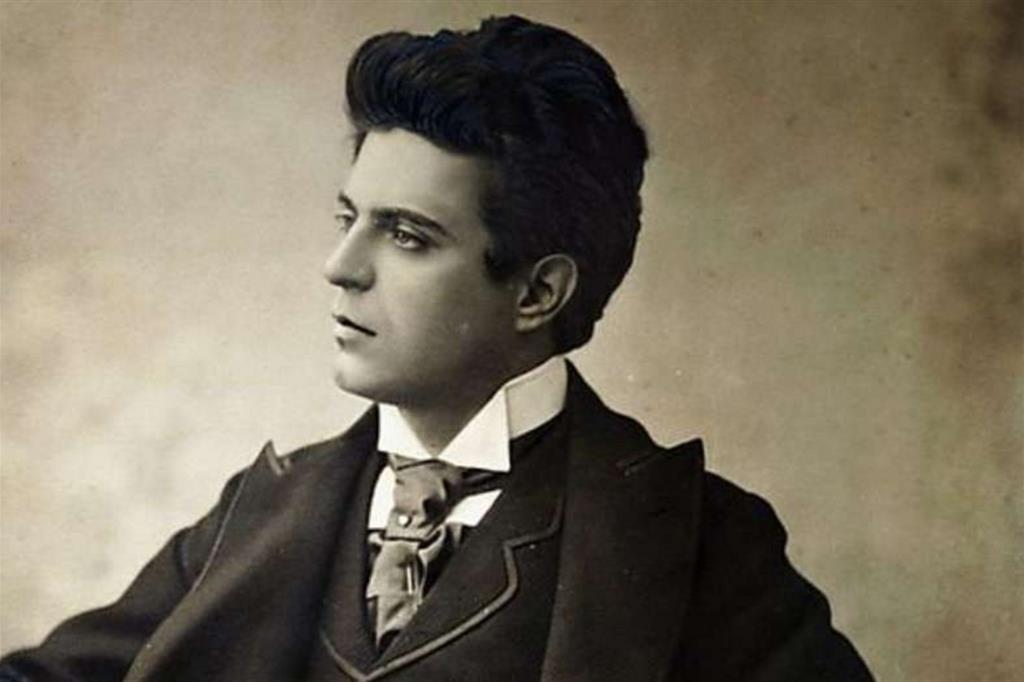
Wolfgang Amadeus Mozart
The Famous Miserere Incident
On their first trip to Italy in 1769, the Mozarts also visited Rome. Thanks to Leopold’s skillful travel planning and good connections, they were allowed to visit the Vatican, and the 13-year-old Mozart was even personally awarded the Order of the Golden Spur, the second highest honor in the Church, by Pope Clement. An honor that Gluck had also received a few years earlier.
During the visit to the Vatican in Easter week, the famous Miserere incident took place in the Sistine Chapel (see below).[/sc_fs_faq]
It was in the famous chapel that Mozart heard Allegri’s Miserere. This 9-part chorale was only allowed to be heard in the Sistine Chapel during Holy Week and it was forbidden, under threat of excommunication, to make a copy of the musical piece. Hardly any traveler to Rome missed this experience during Holy Week. Mozart listened very attentively and, back in his quarters, copied the notes from memory onto paper, practically without mistakes. After a second visit, minor errors were still corrected.
LINK TO FULL BIOGRAPHY OF MOZART
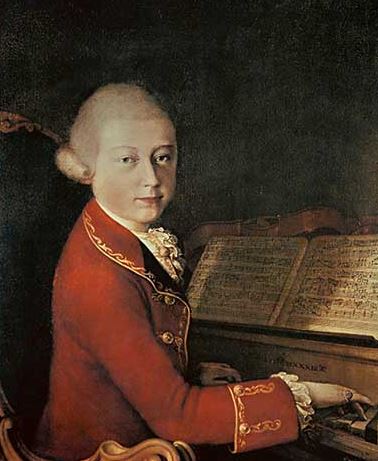
Giacomo Puccini
Tumultuous premiere of “Tosca”
Puccini’s main event in Rome was the premiere of his “Tosca”, which was then a huge event in Rome and was even attended by Queen Margaret (yes, the one with the pizza). Already in the run-up the mood was hostile, on the one hand because the Romans were offended, since Puccini undertook an invasion of the Milanese with the artists of La Scala, and on the other hand because the Papal Church acted against the anti-clerical keynote.
Roman Color of “Tosca”
Puccini had taken great pains to make the original Roman settings as authentic as possible (with the help of Hohenstein’s famous sketches) in the style of verismo. In addition, he tried to imitate the bell sounds of the nearby St. Peter’s Basilica and commissioned a Roman writer to compose the lines of the shepherd boy in original Roman dialect. The Romans could not be appeased, however, and a bomb threat threatened to derail the performance at the last minute, but the play was then given. Among the notables was Siegfried Wagner, who praised the work, which was an accolade for the Wagner fan Puccini.
However, the success of the premiere was moderate, the brutality (critics said “banality”) of the music was too unusual, there was even talk of a “torture opera”. Indeed, “Tosca” is one of the most bloodthirsty operas in the repertoire. There are two suicides and one shooting. In addition, the leading actress commits a murder. Thus, at the end of the opera, no main character remains alive. As if that were not enough, Puccini also presents the viewer with a torture scene on stage in the second act.
After the lukewarm reception, the first performance took place shortly thereafter at La Scala in Milan under the baton of Arturo Toscanini, which became a great success and was to pave the work’s glorious way.
LINK TO COMPLETE PUCCINI BIOGRAPHY
Gioachino Rossini
Tumultuous first performance of “Barbiere”
Rossini was theater director and composer in Naples when he received a commission for the Teatro Argentina. He accepted it and, at the age of 23, wrote within a few weeks one of the greatest and most groundbreaking operatic works. The premiere became a fiasco, but by the third performance Rossini was celebrated and the first performance of “Barbiere di Siviglia ” at the Teatro Argentina became a myth (see section after next).
A year later Rossini came to Rome with another commissioned work, this time to the Teatro della Valle. It is “Cenerentola” and his most difficult opera to date. The tenor is nervous about the virtuoso arias with the high C’s, the baritone fears Rossini’s invention of the presto sillabato (the rapid speech singing) and the leading lady has to manage a firework of ornaments, tone chains and leaps in the final piece “Non più mesta” that is breathtaking. This piece is among the most demanding that has been written for a coloratura soprano. And the premiere? History repeats itself, the first performance became a failure, but soon the Romans are at Rossini’s feet.
The fiasco of the first performance of Barbiere
The first performance of the work was chaotic and flopped. Contributing to the failure may have been that Paisiello’s previous work was well known and respected, and the audience was overwhelmed with Rossini’s hurricane. Possibly the performance was even sabotaged by Paisiello’s supporters.
In addition, there were grotesque events on stage. Among other things, one of the singers tripped over a trap door and fell on his face. During the finale, a cat suddenly appeared on stage. After being chased out, it came once again and jumped on the arms of one of the singers. The audience began to meow and spurred the animal on.
One of Rossini’s greatest inventions, which he first used in “Italiana in Algeri” and in “Barbiere di Siviglia” was the so-called Rossini crescendo. One of these passages in “Barbiere” is Basilio’s aria “La calumnia è un venticello”. The text of the aria sounds like the definition of a Rossini crescendo: it begins with a breeze and gradually builds into a musical hurricane until it ends with the firing of a cannon.
To the complete ROSSINI BIOGRAPHY
CONCERT HALLS AND OPERA HOUSES
Teatro all-opera di Roma I/II
The Roman Opera House is a renowned house that dates back to 1880. It was the venue of some world premieres such as Cavalleria rusticana, Tosca, l’amico Fritz or Iris (with Caruso). It accommodates 1700 seats and is opera and ballet performance venue.
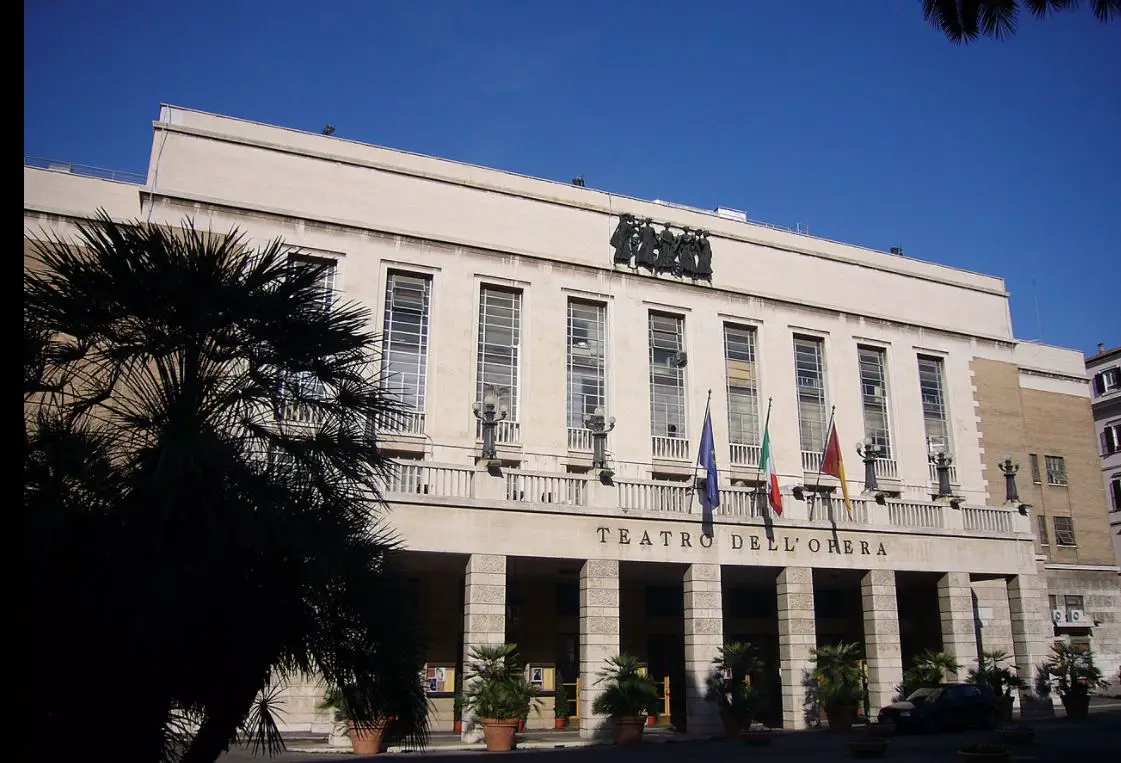
Teatro all-opera di Roma II/II
First performance of Cavalleria rusticana
In 1890, at the Teatro Costanzi, perhaps the greatest sensation in the history of opera took place. With the presence of the music-loving Queen Margerita but in front of a half-empty hall, the premiere of the piece by the completely unknown composer Mascagni took place within the framework of Sonzogno’s competition. When the play was over, Mascagni had to step in front of the curtain sixty times and the duration of the ovation roughly corresponded to the performance time of the one-act play. The next day Mascagni was a celebrity and quickly the work began its triumphal march around the world, which it has maintained to this day.
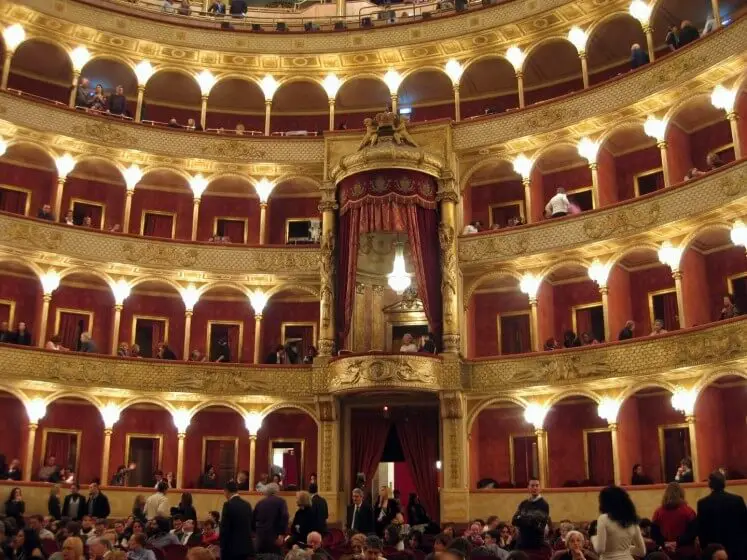
Terme di Caracalla
Where the three tenors sang
At least since the performance of the “three tenors” (Pavarotti, Domingo, Carreras) in 1992 in the Roman thermae, people know this open-air venue. In these historical thermae, open-air concerts and operas are performed during the summer. The stage and seating capacity are very large.
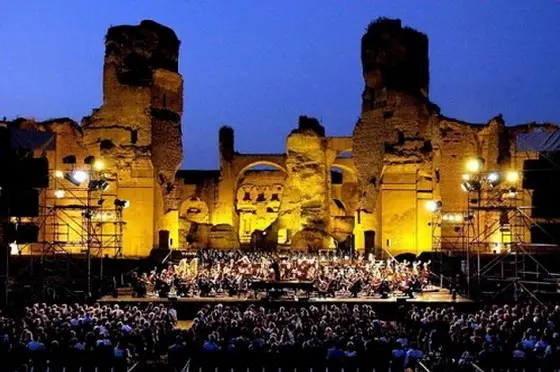
Teatro Argentina
Premiere of “Barbiere di Siviglia”
The Argentina had the honor of having been the stage for one of the most famous premieres in the history of opera, the tumult of the February 20 premiere of “Barbiere” became a legend. More about this in the digression below.
This theater is located on the site where once was the huge theater of Pompey, where Julius Caesar was killed in 44 BC. The Teatro Argentina was built in the 18th century and still stands in the splendor of the 19th century, and in modern times it is the site of musical and spoken theater and belongs to the Teatri di Roma.
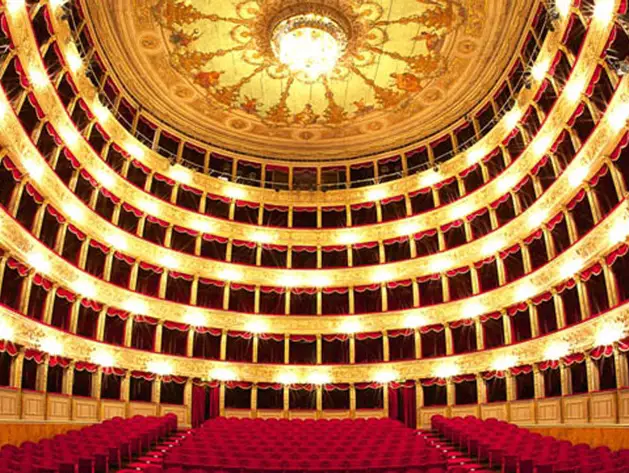
CHURCHES
Sistine Chapel
Mozart notes the Miserere
It was in the famous chapel that Mozart heard Allegri’s Miserere. This 9-part chorale was only allowed to be heard in the Sistine Chapel during Holy Week and it was forbidden, under threat of excommunication, to make a copy of the piece of music. Hardly any traveler to Rome missed this experience during Holy Week. Mozart listened very attentively and, back in his quarters, copied the notes from memory onto paper, practically without mistakes. After a second visit, minor errors were corrected.

Madonna del Rosario
Liszt befriends the pope
At this retreat, Liszt worked on his Christus Oratorio, among other works. The influential Pius IX visited him here and Liszt played compositions for him. For his part, the pope is said to have sung from Bellini’s “Norma.” This encounter developed into a longer-lasting relationship and Liszt visited Pius IX several times at Castel Gandolfo.
The church is behind the Vatican and somewhat more difficult to reach by public transportation. The church exterior with its double staircase is very impressive, but the church is only open on Sundays. Franz Liszt stayed in the monastery for five years starting in 1863, which is noted on a plaque on the perimeter wall below the church entrance.
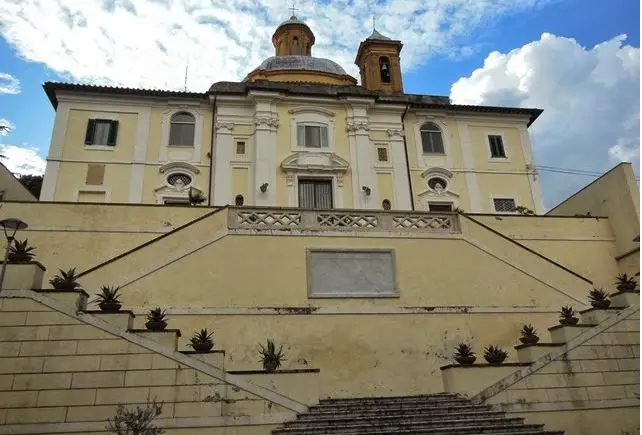
San Giovanni in Laterano
Handel’s sensational concert in the impressive church
In 1707, Handel is said to have given a sensational concert in the Lateran Church. The Lateran Church as the oldest church building in Rome, one of the four papal churches and the church of the Bishop of Rome (personal union of the Pope). The church is stunning and a visit is highly recommended.
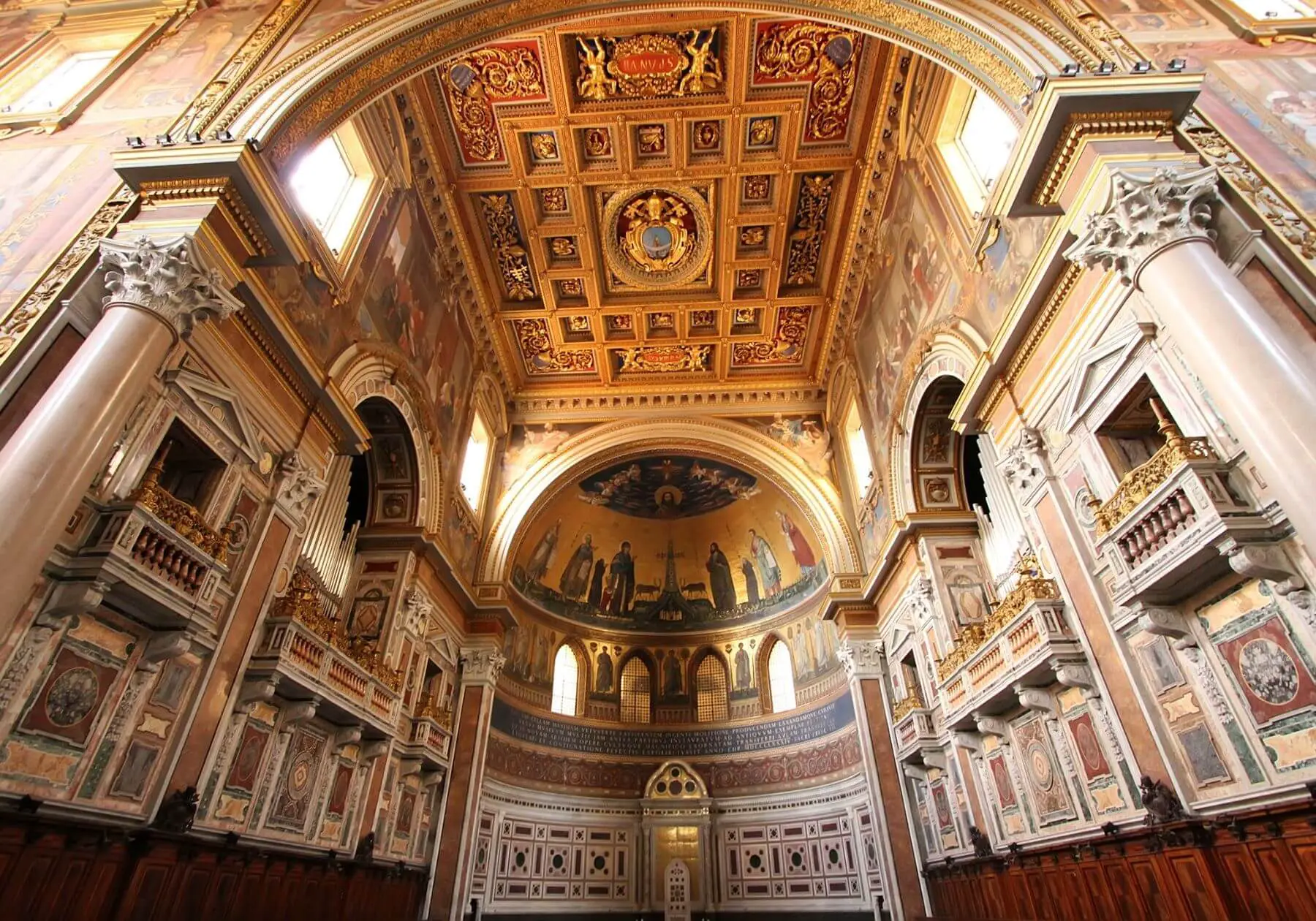
Sant-Andrea della valle
Tosca-s Act 1
Sant’Andrea is a magnificent church decorated with golden ceilings and a huge dome.
Cavaradossi paints his Madonna there in the first act and Angelotti hides in a side chapel. You won’t find the side chapel with Angelotti’s women’s clothes and Cavaradossi’s Madonna because it does not exist, nevertheless a visit is worthwhile.
View of the dome of the basilica:
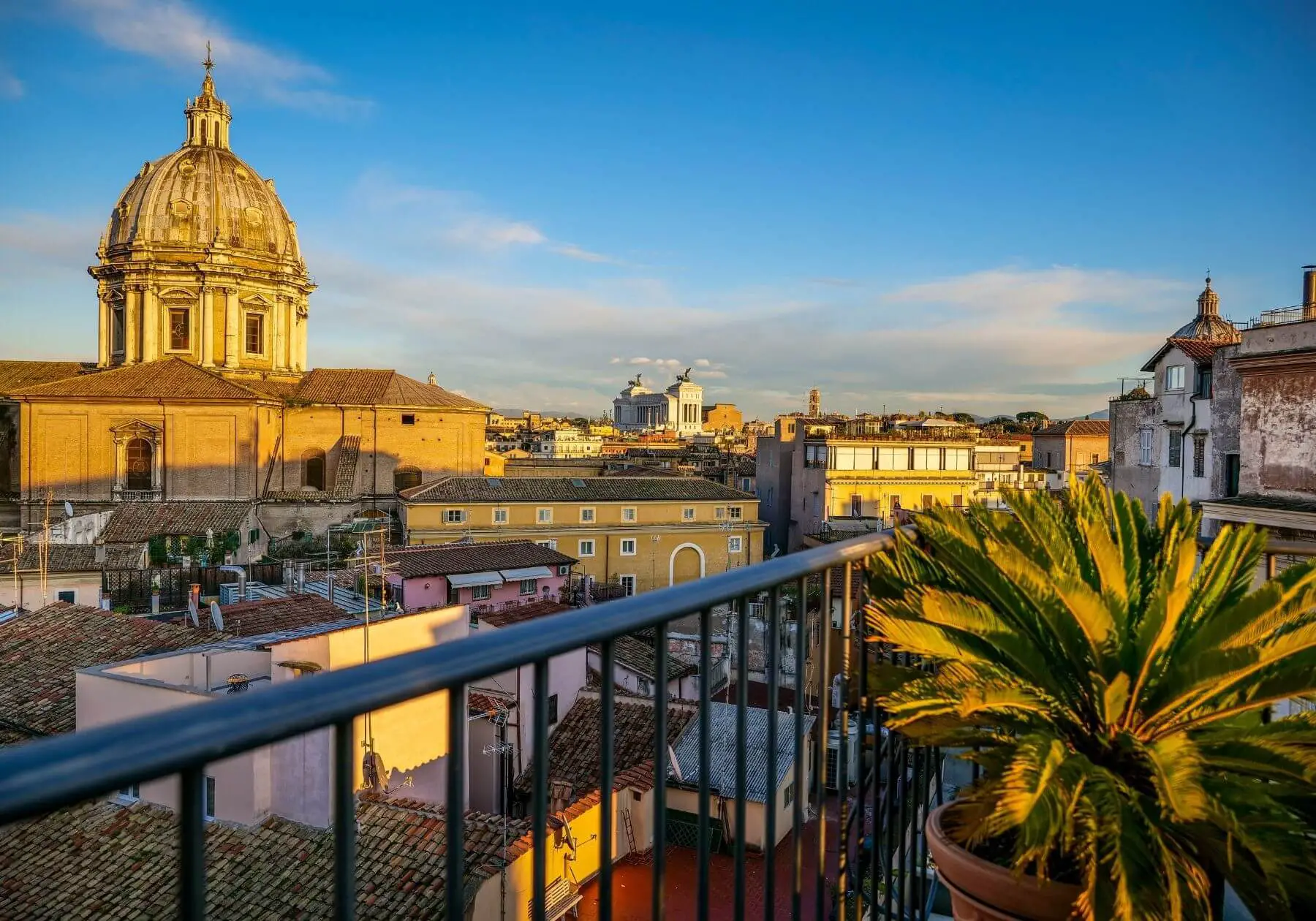
PALAZZI
Palazzo Colonna
A stunning downtown aristocratic palace where Handel made music. Palazzo Colonna is partially open to the public, including the famous Galleria d’Arte, built in the 17th century by Cardinal Girolamo Colonna.
Grande sala of the Galleria d’arte:
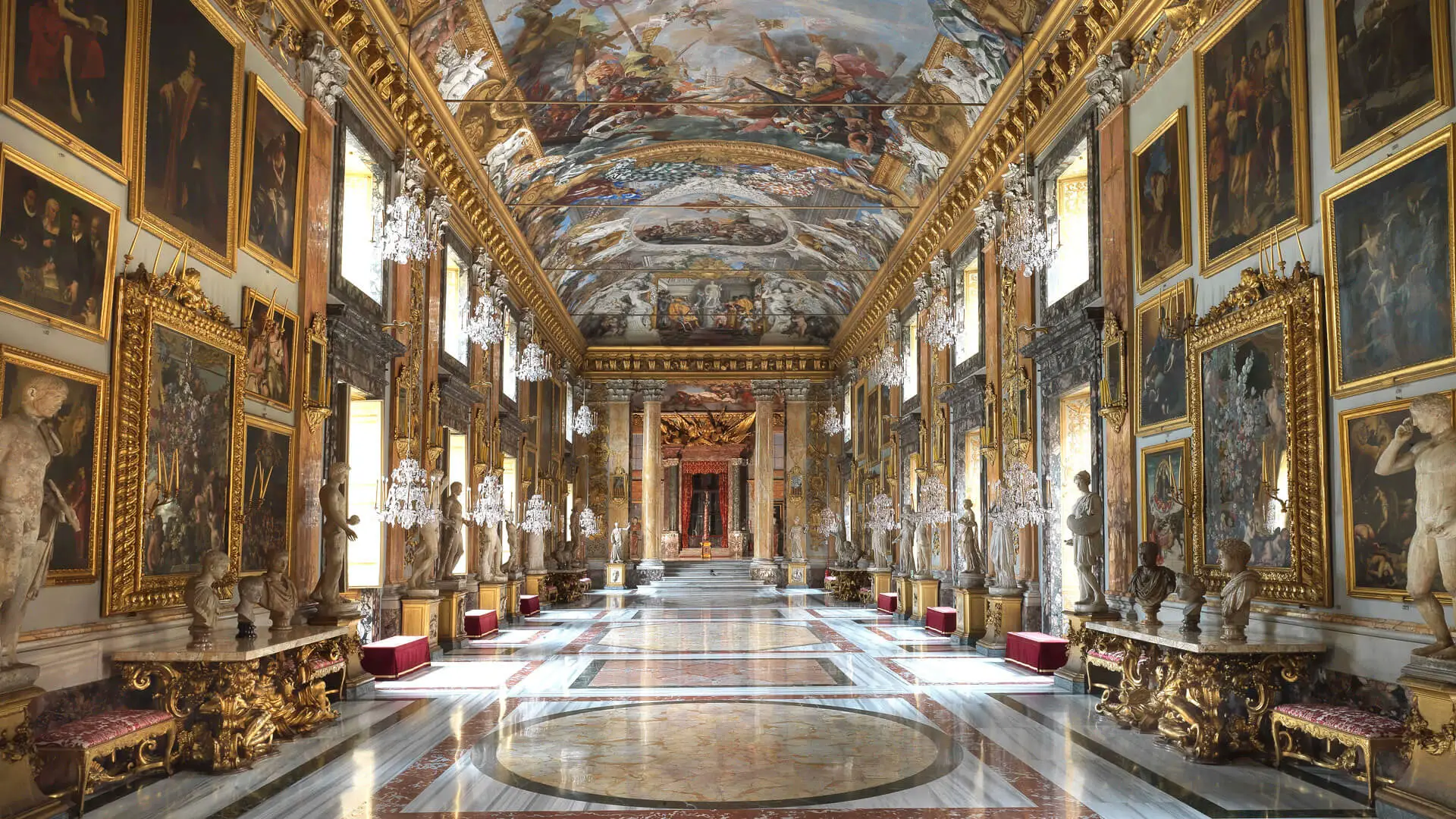
Villa d-Este (Tivoli; outside Rome)
Franz Liszt’s Place of Inspiraton
Franz Liszt was well connected in ecclesiastical circles and he became acquainted with Cardinal Gustav Adolf Cardinal Hohenlohe. The latter had championed the restoration of the Villa d’Este, a magnificent palace with famous Renaissance gardens and fountains. The latter were irrigated by elaborately diverted waters. Liszt visited the cardinal several times at the Villa d’Este and lived there from 1869. Among other works, the famous “Les jeux d’eau à la Villa d’Este” from the “Années de pèlerinage” was composed there. Villa d’Este is located about 30 kilometers outside Rome and is also the site of another world-famous attraction, Villa Adriana.
Fountain of Villa d’Este:
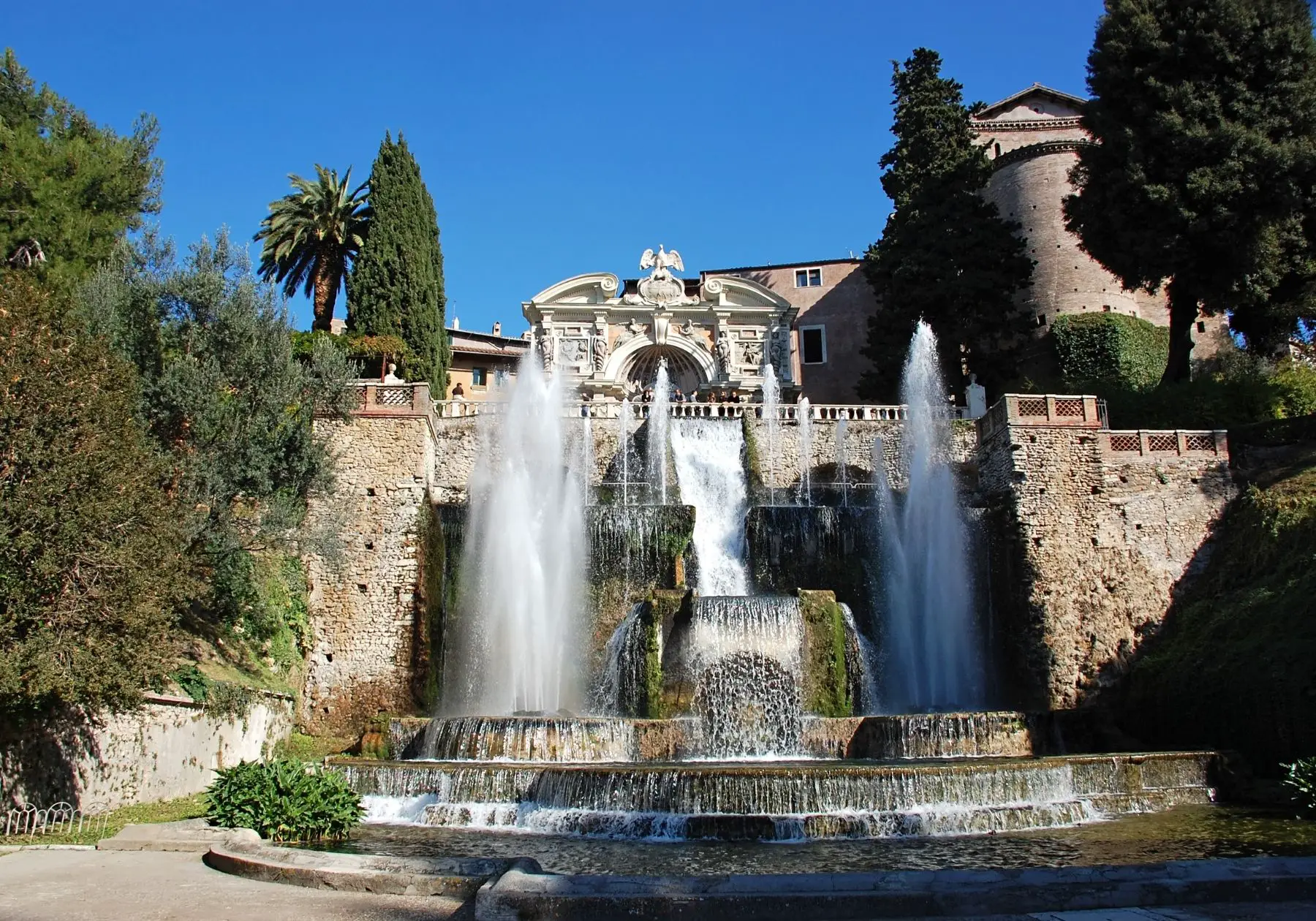
Gardens of the Villa d’Este:
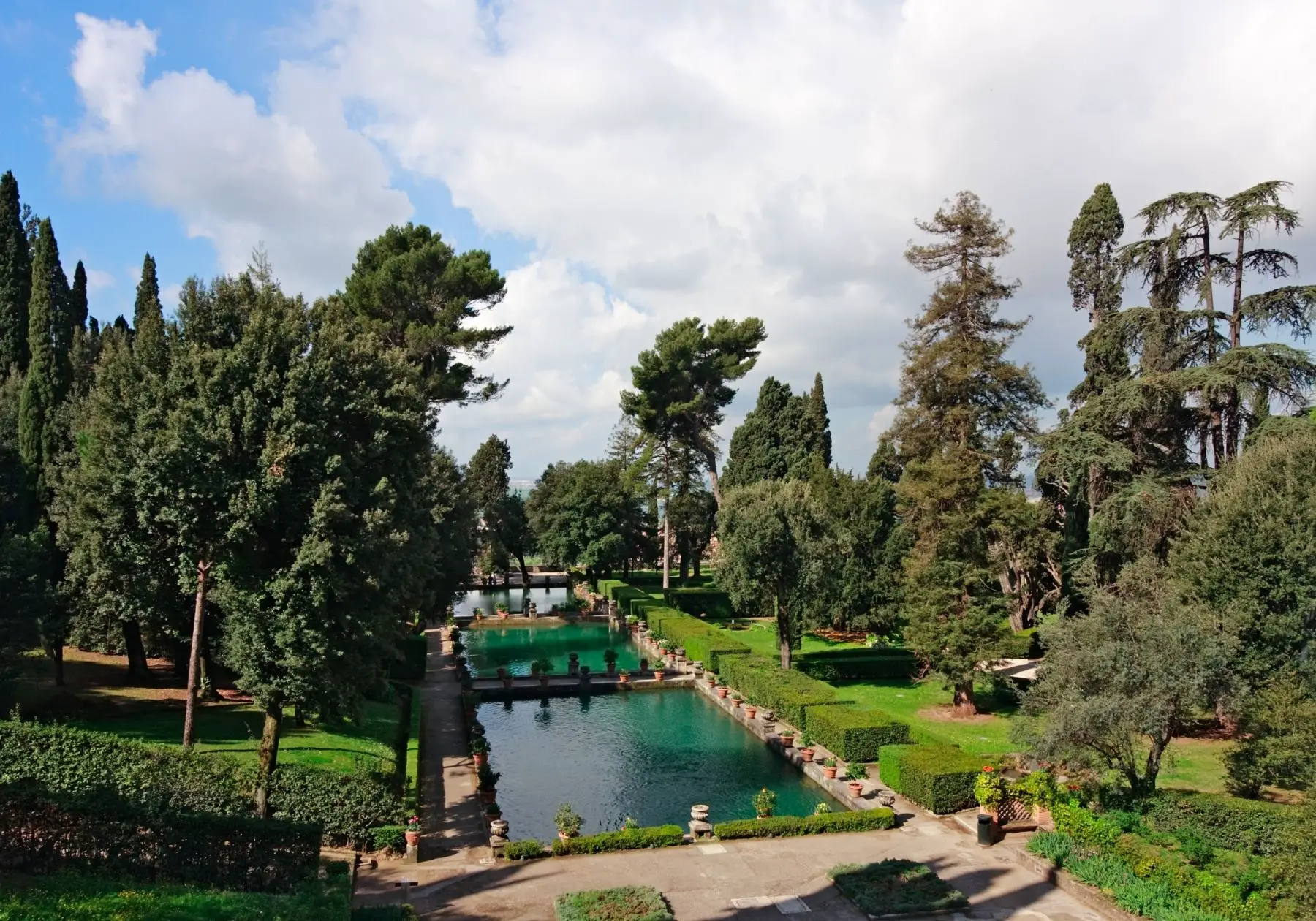
Castel Sant-Angelo (Angel-s church)
Tosca’s third act
Every opera lover knows the famous angel statue of Castel Sant’Angelo, which is featured in the third act of Tosca. The castle has a long and eventful past, having begun life in the 2nd century as a mausoleum, served as a residence for popes, was the dwelling of the infamous Lucrezia Borgia, and later became an administrative and prison tower. Mussolini had the tower transformed into a museum, which it remains to this day. The terrace, where Puccini and the poet Sardou had Cavaradossi’s execution played, can be entered, the view of the Tiber and St. Peter’s Basilica is breathtaking, and (the connoisseur knows it already) one realizes that Floria Tosca, even with the best long jumping skills, would never ever manage to jump into the Tiber.
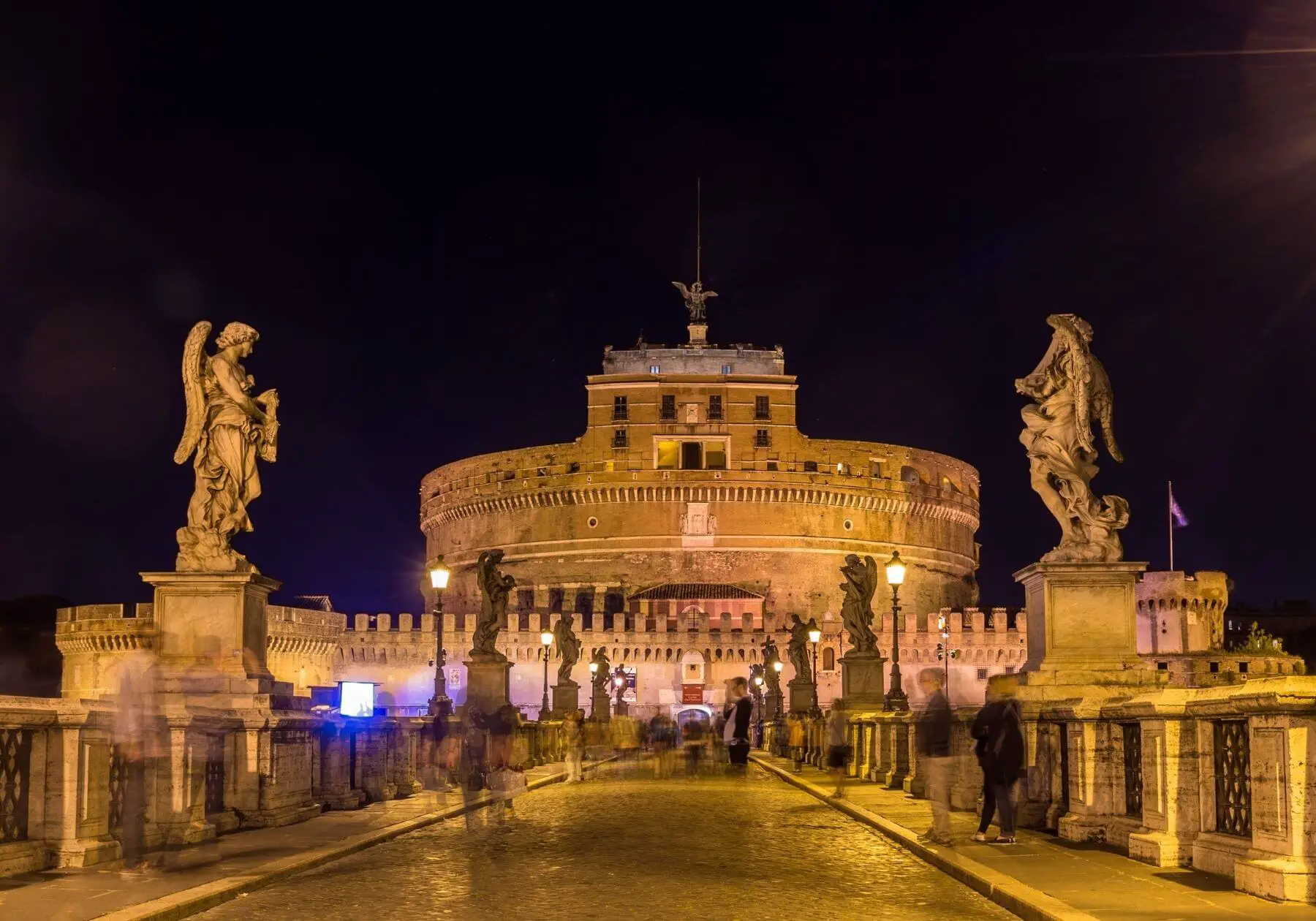
Palazzo Farnese
Tosca’s second act
Puccini moved the office of the despotic Scarpia to the Palazzo Farnese, while Sardou situated it in the Engelburg in his novel. Palazzo Farnese exists, it was built by Alessandro Farnese, a nobleman and later Pope Paul III, and for almost 100 years it has been the seat of the French embassy, which established the embassy there with the obligation to take care of the works of art. The most beautiful Renaissance building in Rome is accessible only with guided tours.
Book months in advance, Take pass with you on tour.
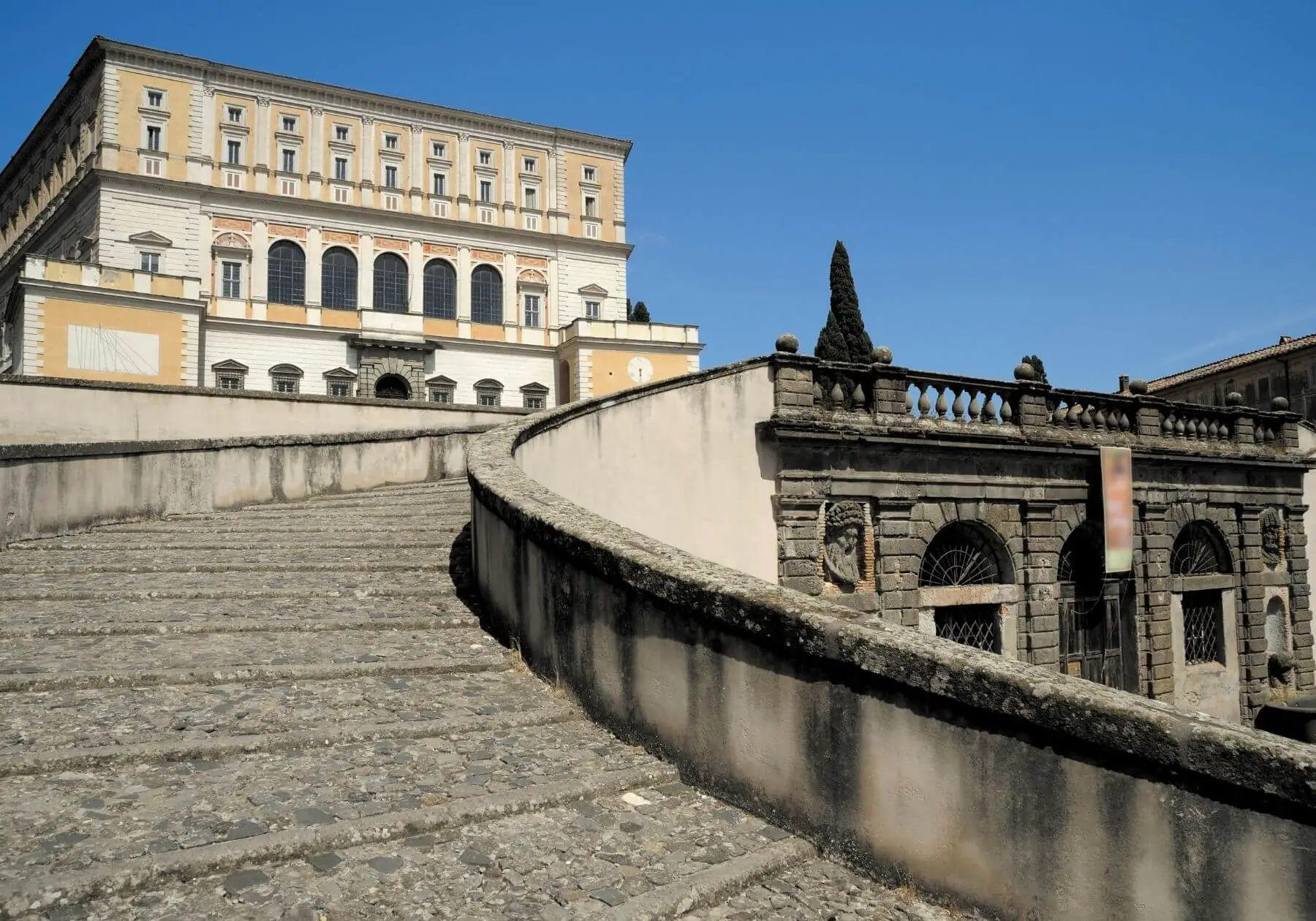
HOUSES AND APARTMENT BY ARTISTS
Palazzo ruspoli / Residenza Napoleone
Handel lived for a time in this centrally located city palazzo of Ruspoli and wrote his “Ressurezione” here, among other works. This palazzo was famous for its marble staircases. Today the building is partially occupied by a beautiful boutique hotel (Residenza Napoleone) and can only be visited during sporadic exhibitions.
Contemporary drawing of Palazzo Ruspoli:
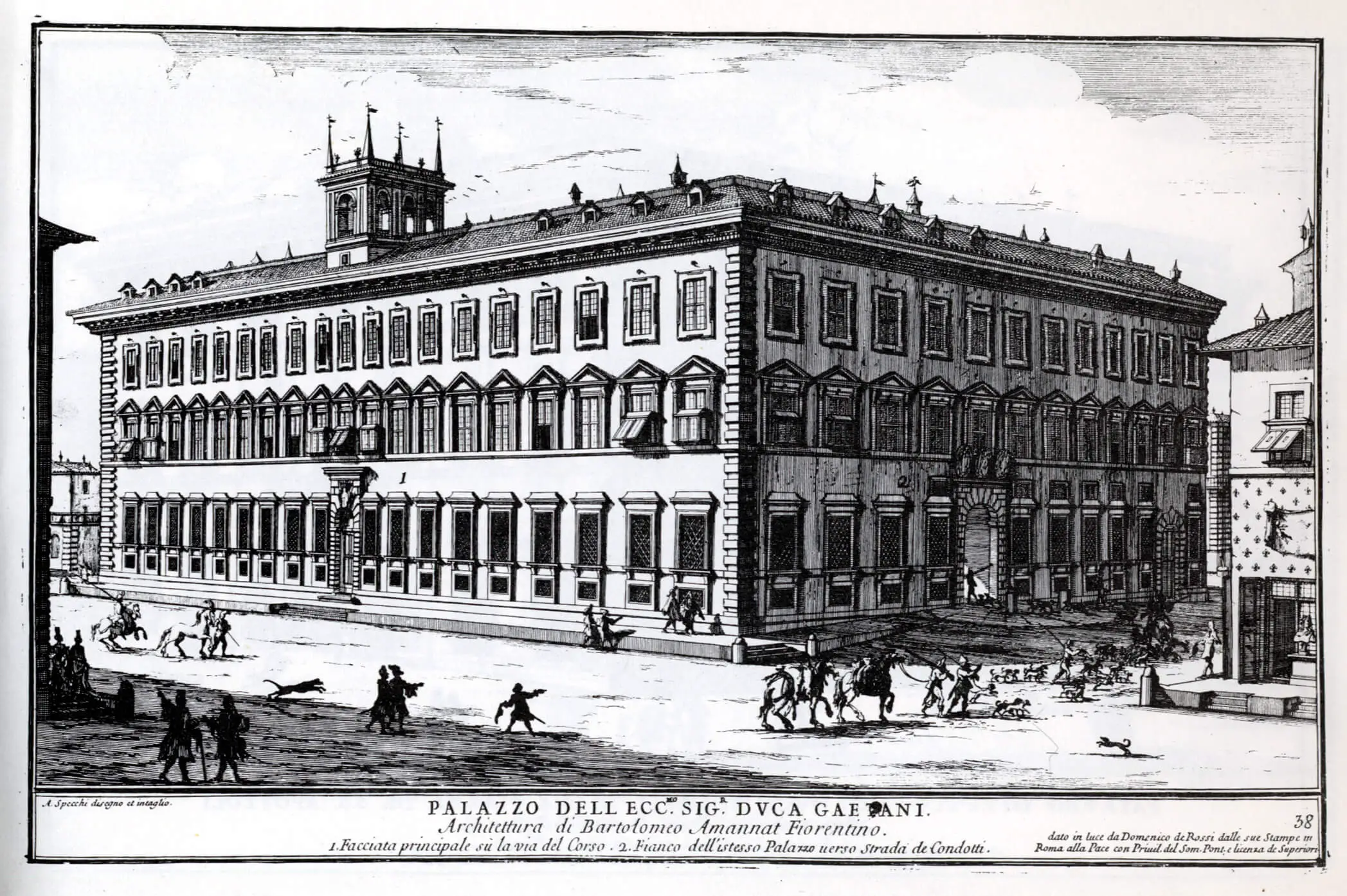
Villa Medici
Where the Rome Prize winners lived:
From 1803-1968, the Paris Conservatoire (along with institutions of other artistic stripes) held an annual competition in which young composers could submit a work. The winner was awarded a stay of several years in Rome at the Villa Medici. Among the winners of this prestigious prize were composers with resounding names such as Debussy, Massenet, Saint-Saens, Charpentier, Bizet and Gounod.
Today Villa Medici is an art institute that can be visited with a coffee restaurant. Location, the garden and view over Rome are magnificent. It is close to the Spanish Steps and Villa Borghese.
Access to the building only with tour, book tour in advance.
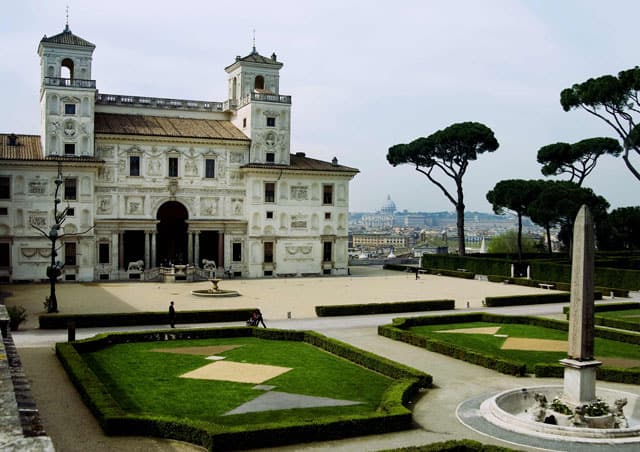
Debussy in front of the Villa Medici (center, wearing a white jacket):
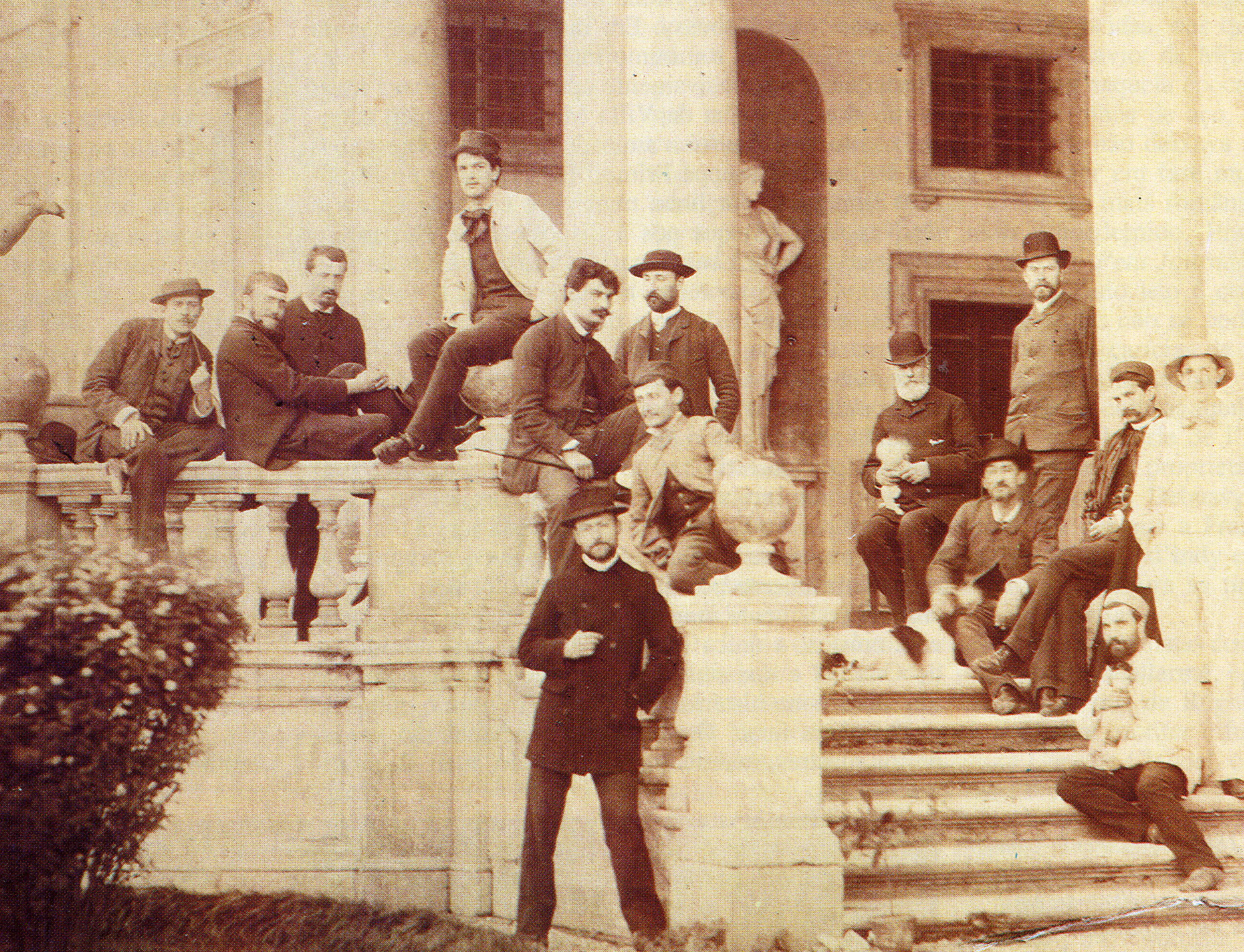
Forum Romanum
Liszt’s residence
In 1865 Liszt went to live in a comfortable apartment in the monastery of Santa Francesca Romana. This monastery is located in the Roman Forum in the corner of the Colosseum, next to the church of the same name and the temple of Venus and Rome. Today this building houses the administration of the Forum.
Santa Francesca Romana:
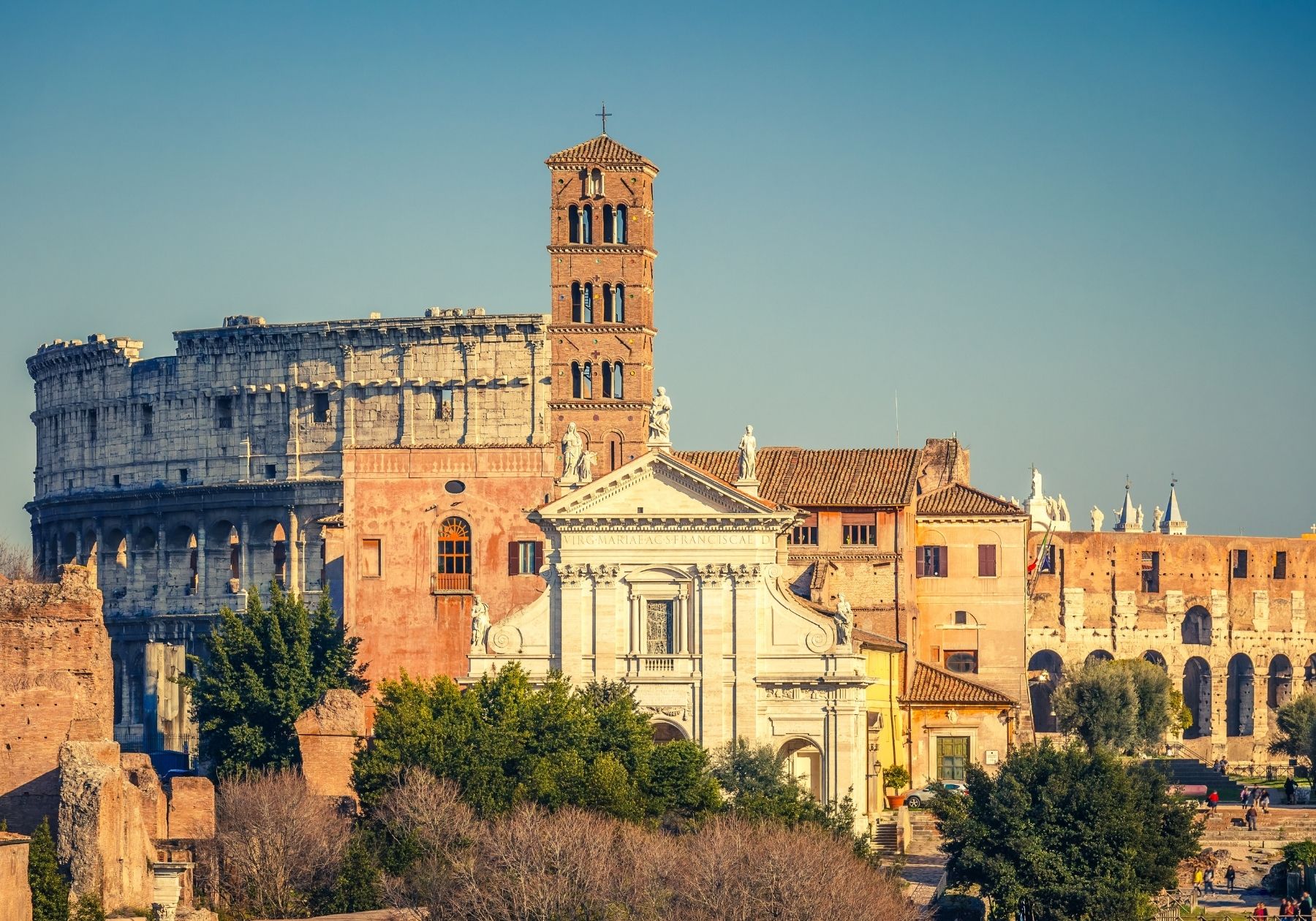
HOTELS AND RESTAURANTS
Caffè Greco
Where Liszt met Wagner
This caffè dates back to 1760 and still retains its historic charm. It includes long corridors and rooms where hundreds of artworks hang. It was a famous artists’ café and the list of guests reads like a who’s who of 19th century artists. Liszt was here often and is said to have met Richard Wagner here.
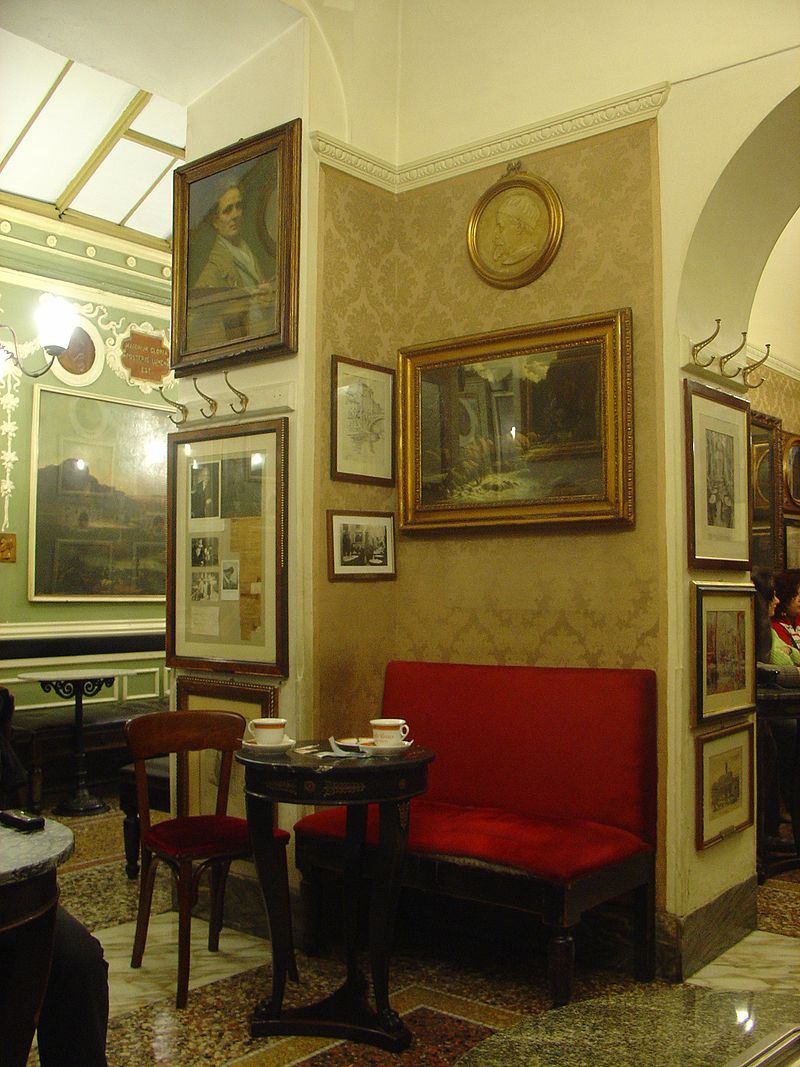
Grand Hotel Plaza di Roma
Mascagnis spent the last 12 years of his life in this luxury hotel and died in his suite. Around the corner, in Via del Corso, near the Plaza Hotel, in the part of the street that belongs to Rione Campo Marzio, there is a bust of Mascagni, placed in 1948, commemorating the famous resident.
Mascagni’s bust:
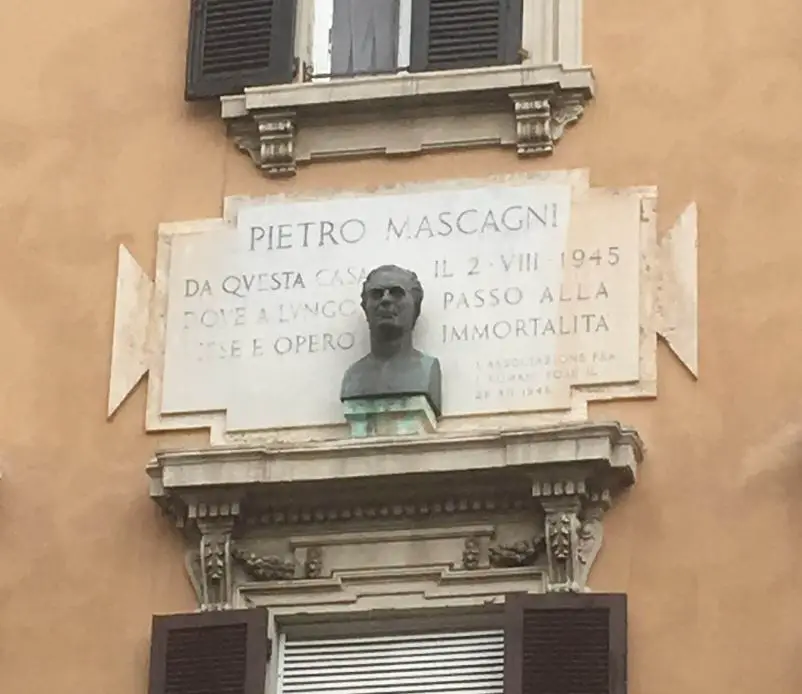
The hotel impresses with its square and terrace. A walk through the hotel and a (not cheap) coffee on the beautiful terrace complete a visit to the city center.
Grandhotel Plaza:
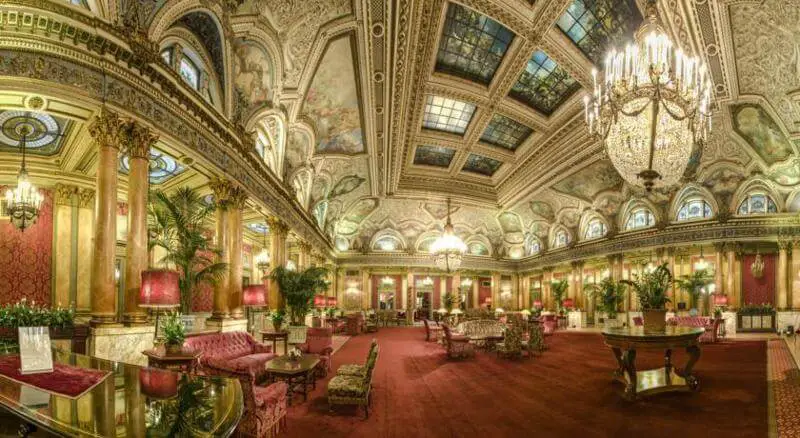
WORKS RELATING TO ROME
With the compositions of his late years, Liszt composed some forward-looking ones. The composition of the piece ” Les jeux d’eau à la Villa d’Este” already refer to impressionism. It was also in Rome that Liszt met the young Debussy. Liszt occasionally visited the Villa Medici, where the Rome Prize winners’ residence was located. He met Debussy there in 1886. Debussy later expressed himself explicitly positive about Liszt’s virtuoso compositions.
In the composition for the fountains, however, not only impressionistic sparkling water sounds can be heard, but also fortissimo passages. When visiting the fountains in Tivoli, one understands why, as thundering, water-spouting fountains await the visitor.
Hear and see Placido Domingo in a “live film” shot in the original locations described by the composer. At noon in Sant’ Andrea della Valle, the same evening in Palazzo Farnese and the next morning in Castel Sant’Angelo. The singers were connected via monitors to the conductor and the orchestra, who played in a concert hall. Here at Castel Sant’Angelo.

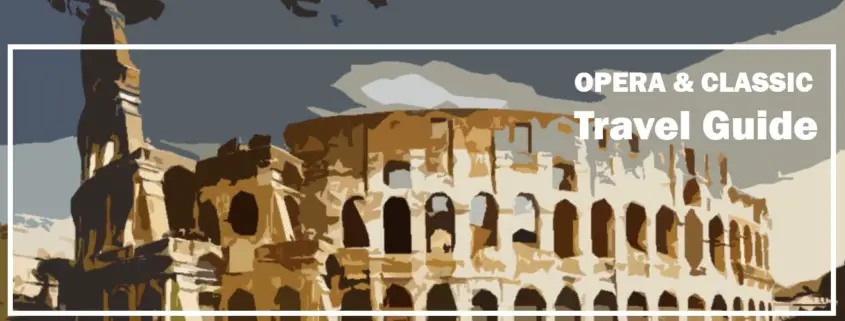

Leave a Reply
Want to join the discussion?Feel free to contribute!